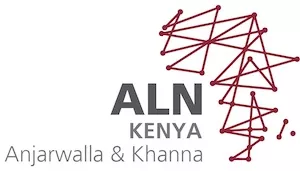Trading within the African Continental Free Trade Area (AfCFTA) began on 1 January 2020, marking a significant milestone for intra-African trade. This is a historic turning point for Africa, where only approximately 16-18% of trade currently takes place between member states. Under AfCTA, now the world's largest free trade area, and the auspices of the African Union (AU), the continent intends to increase this percentage exponentially.
The Action Plan for Boosting Intra-African Trade1 which is the AfCFTA policy framework that precedes the Africa Continental Free Trade Agreement (the AfCTA Agreement), sets out seven key areas of cooperation in promoting intra-African trade:
- trade policy;
- trade facilitation;
- trade finance;
- trade information;
- trade-related infrastructure;
- productive capacity; and
- factor market integration.
Currently, 54 out of the 55 countries that make up the AU have signed the AfCFTA Agreement, with Eritrea as the only exception, and 34 countries have deposited their instruments of ratification2. It is anticipated that other countries such as Somalia, Algeria and Zambia3, where parliamentary or cabinet approval has been obtained, will soon add to the number of countries that have ratified the AfCFTA. If optimally actualised, the AfCFTA has the potential to connect a population of approximately 1.35 billion people4 with a combined GDP of over USD 3.4 trillion5.
Impact of the AfCTA on trade
Most of the trade undertaken by African nations is with
the rest of the world, which is a reality that the AfCFTA Agreement
wants to change. Africa's exports to the rest of the world are
primarily raw materials, inclusive of extractive materials like oil
and minerals, while its imports include manufactured goods, such as
automobiles, aircrafts, electronics, pharmaceuticals, machinery and
engineering products, among others. Therefore, the value of the
goods imported by African countries far outweighs the exports they
make to the rest of the world, affecting the balance of trade of
African countries.
The AfCFTA establishes a single continental market for goods and services, with the aim of increasing intra-African trade by cutting tariffs by approximately 90%6 and harmonising trading rules at a continental level. If successful, AfCFTA is projected to increase intra-African trade by 52.3% by 20227, which is a significant jump from the current 16-18%. Reduced tariffs and other barriers on various goods will increase the market opportunities for African producers. The AfCFTA also intends to address non-tariff barriers, such as import bans and general or product-specific quotas that may be imposed by member countries and will seek to provide for a dispute resolution settlement regime that will expedite the resolution of any trade disputes that may arise.
With the prevailing effects of the COVID-19 pandemic, there is need to have pharmaceuticals and personal protective equipment (PPE) produced and distributed to where they are most needed. Trading under the AfCFTA has the potential to mitigate effects of the COVID-19 pandemic by allowing free movement of pharmaceuticals and PPE, as well as the free and easy exchange of technical expertise. There is hope that this will speed up Africa's general economic recovery following the pandemic.
Conclusion
In 2021, it is anticipated that there will be increased
intra-African trade with more countries joining in and depositing
their instruments of ratification to the AfCFTA Agreement. One of
the first efforts that demonstrate commitment to the success of
trading under the agreement is the announced partnership between
Ethiopian Airlines-DHL and the African Electronic Trade (AeTrade)
Group8 for the transportation of
historical parcels within the AfCFTA. While full implementation of
the AfCFTA Agreement is expected to take years, there is palpable
optimism about its ability to boost intra-African trade in the
coming decades.
Through our historical expertise advising international and regional clients trading on the continent, and our track record on questions revolving around taxes and tariffs, commerce and investment, dispute resolution, anti-corruption and transparency issues as well as the rule of law, we are ready to assist clients to navigate the intricacies of the developing new common market.
*Contributors
Ahmed Y. Jelle (Principal Associate), Wangoi Karuga (Principal Associate) and Jade Makory(Trainee Lawyer)
Footnotes
1. Action Plan for Boosting Intra-African Trade, https://www.au.int
2. Status of AfCFTA Ratification, https://www.tralac.org
3. Status of AfCFTA Ratification, https://www.tralac.org
4. Africa Population, https://www.worldometers.info
5. The African Continental Free Trade Area, https://www.worldbank.org
6. African Continental Free Trade Area: A New Horizon For Trade in Africa, https://www.cfr.org
7. African Continental Free Trade Area: A New Horizon For Trade in Africa, https://www.cfr.org
8. Ethiopian-DHL, AeTrade Group Partner to Transport Historical Parcels Under AfCFTA, https://corporate.ethiopianairlines.com
The content of this article is intended to provide a general guide to the subject matter. Specialist advice should be sought about your specific circumstances.




